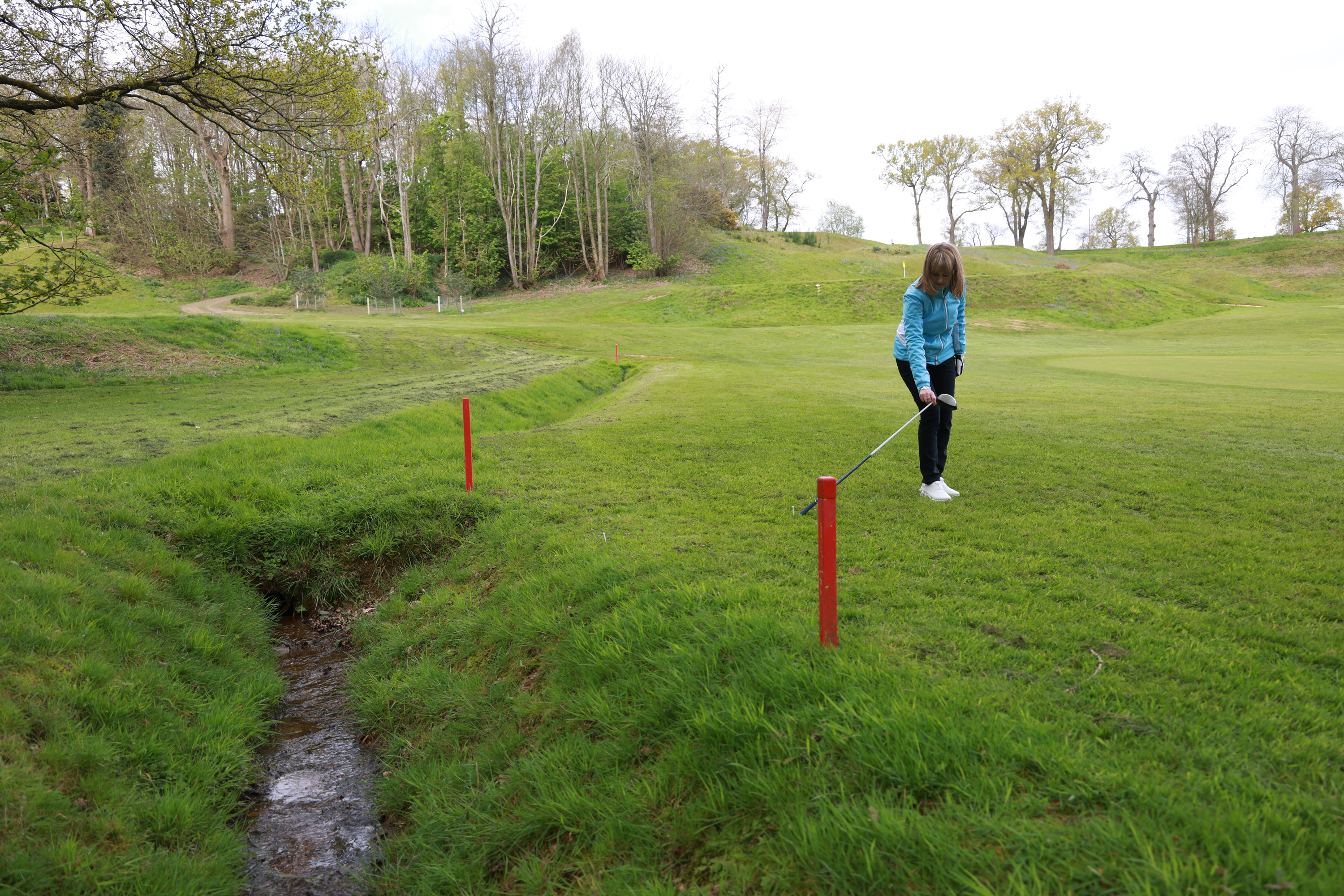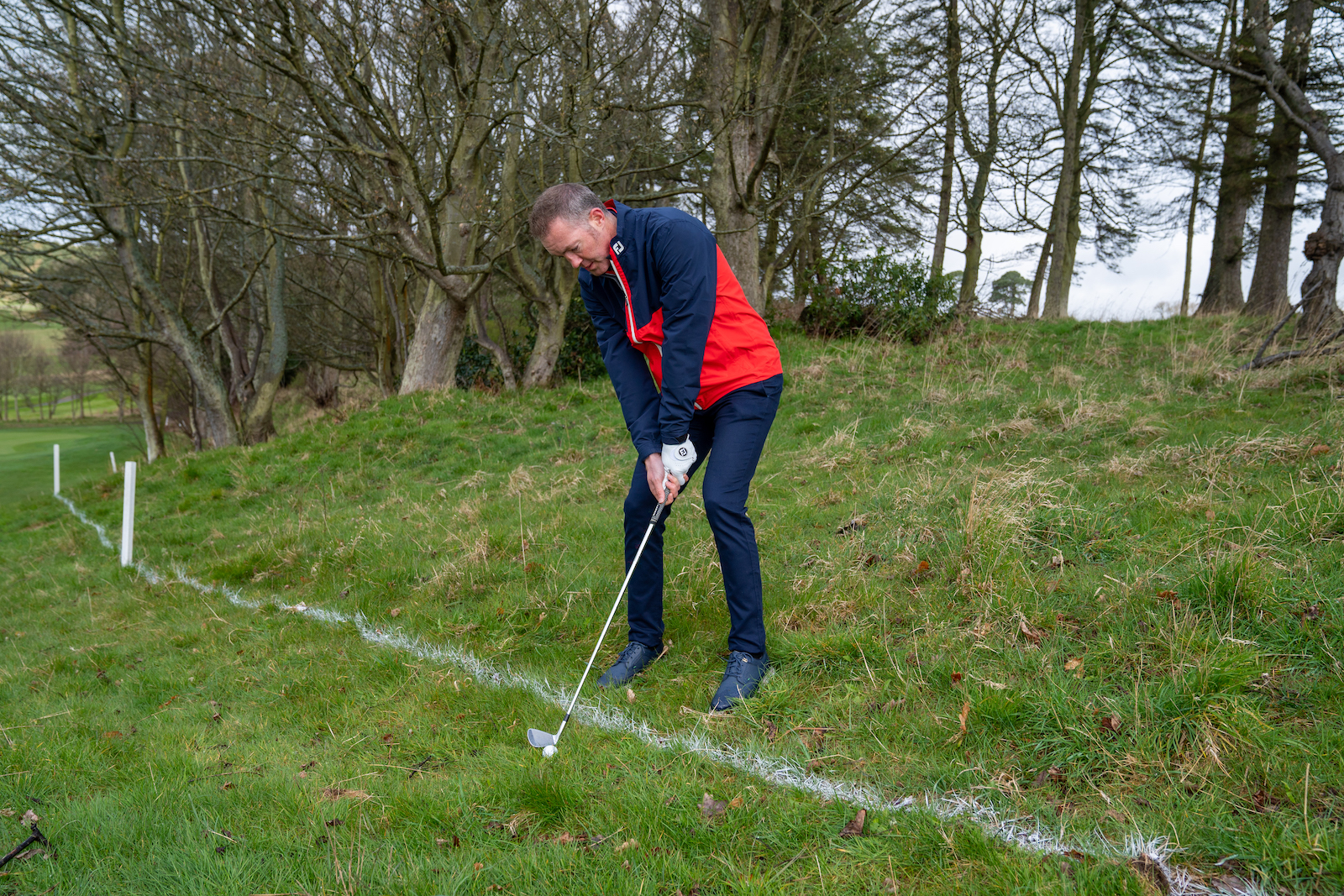
All golfers will have seen red, yellow and white stakes on the courses they have played, anywhere in the world. You probably know that they signify penalty areas (yellow and red), and that white mark the out of bounds, (OB). You may well also know what your options are according to the Rules if you find yourself in a penalty area or OB.
But it's worth a recap if you're uncertain, or if you don't know, we are here to help. Here below we go into the details on how to proceed when you encounter red, yellow and white stakes on the golf course. Having all the information, could save you time and possibly a penalty next time you find yourself near one next time you're on the course.
Yellow Stakes

Red and yellow stakes signify penalty areas. These might (or might not) have water in them.
If you go into a yellow penalty area or it’s known or virtually certain that it has (virtual certainty means 95+% certain as far as the Rules are concerned), you can either play the ball (if that is possible) or you have two options for taking penalty relief. (A penalty of one stroke). It should be noted, you don't have to be able to retrieve your ball to take penalty relief, which is good news if it's in the middle of a lake!
1 - You can go back to where your last shot was played and drop a ball there. If you can't be 100% certain exactly where you played from, you should make an estimate.
2 - You can identify where the ball crossed the edge of the penalty area, where it crossed the line demarcated by the yellow stakes and then, keeping that point directly in line with the flag, go back in a straight line as far as you like and drop a ball there, (either your original ball or a substitute ball.)

Red Stakes

If your ball goes into a red penalty area, you have the same two options for relief as per the yellow penalty area. But you also have a third option. You can drop within two club lengths of where your ball crossed the edge of the red penalty area - the line demarcated by the red stakes. You mustn't drop the ball nearer to the hole than that spot and you mustn't drop the ball in the penalty area. Once again, there's a penalty of one stroke.
As mentioned, you may also play your ball from within both yellow and red penalty areas if you think that is possible. You can also take practice swings that touch the ground in a penalty area and move loose impediments such as twigs. But you mustn't move your ball in doing so.

If a red or yellow stake interferes with your swing, stance or where the ball is lying, you can move them. This is because they are classed as ‘movable obstructions’ under the Rules and you may proceed under Rule 15.2a. If your ball moves when you remove the stake, there is no penalty and you must replace the ball on it's original spot.
Occasionally, the stakes may be set in concrete or similar, in which case you would have to proceed under the immovable obstruction Rule 16.1a(2). However, free relief is available from immovable obstructions anywhere on the course except a penalty area. This means that if you’re ball lies outside the penalty area you are entitled to free relief, but if it’s in the penalty area, sadly, you are not and any drop would be under penalty.
White Stakes

You have to be careful with white stakes. They are not classed as movable obstructions, even if they can be moved! They are boundary objects which are classed as "fixed." If your ball is in bounds and a white stake interferes with your swing, stance or lie, you cannot move it and there is no free relief available. If you can't play a shot, you would would have to take relief under penalty of one shot, under one of the unplayable ball options in Rule 19.
If you remove a stake to facilitate your next shot, but realise your mistake before you make a stroke, you can still escape penalty by ‘restoring the conditions’ under Rule 8.1c - i.e., by replacing the white stake exactly where it was. It's also worth saying that you can stand out of bounds to play a ball that is lying in bounds.

If your ball is the wrong side of the line demarcated by the white stakes, (no part of your ball is touching the golf course), you are out of bounds and only have one option. You must go back to where you played your last shot from, drop there and play again under penalty of stroke and distance. So, if you had played from the tee, you would go back to the tee and play your third shot (you could tee it up again.)
Hopefully though, if you thought your ball may have gone OB, you should have played a provisional ball, which you can then move across to rather than having to make the long walk back.
A key takeaway from this run through of the different-coloured stakes on the golf course, it is that you can move easily movable red and yellow penalty area stakes to play a shot but may not touch white out of bounds stakes even if they are easily movable. That's really rather important to know!







